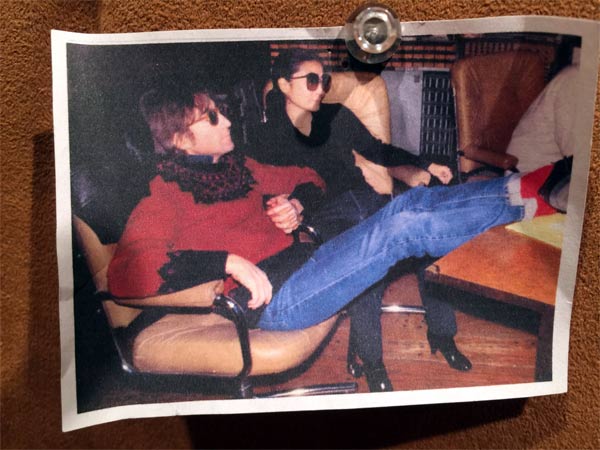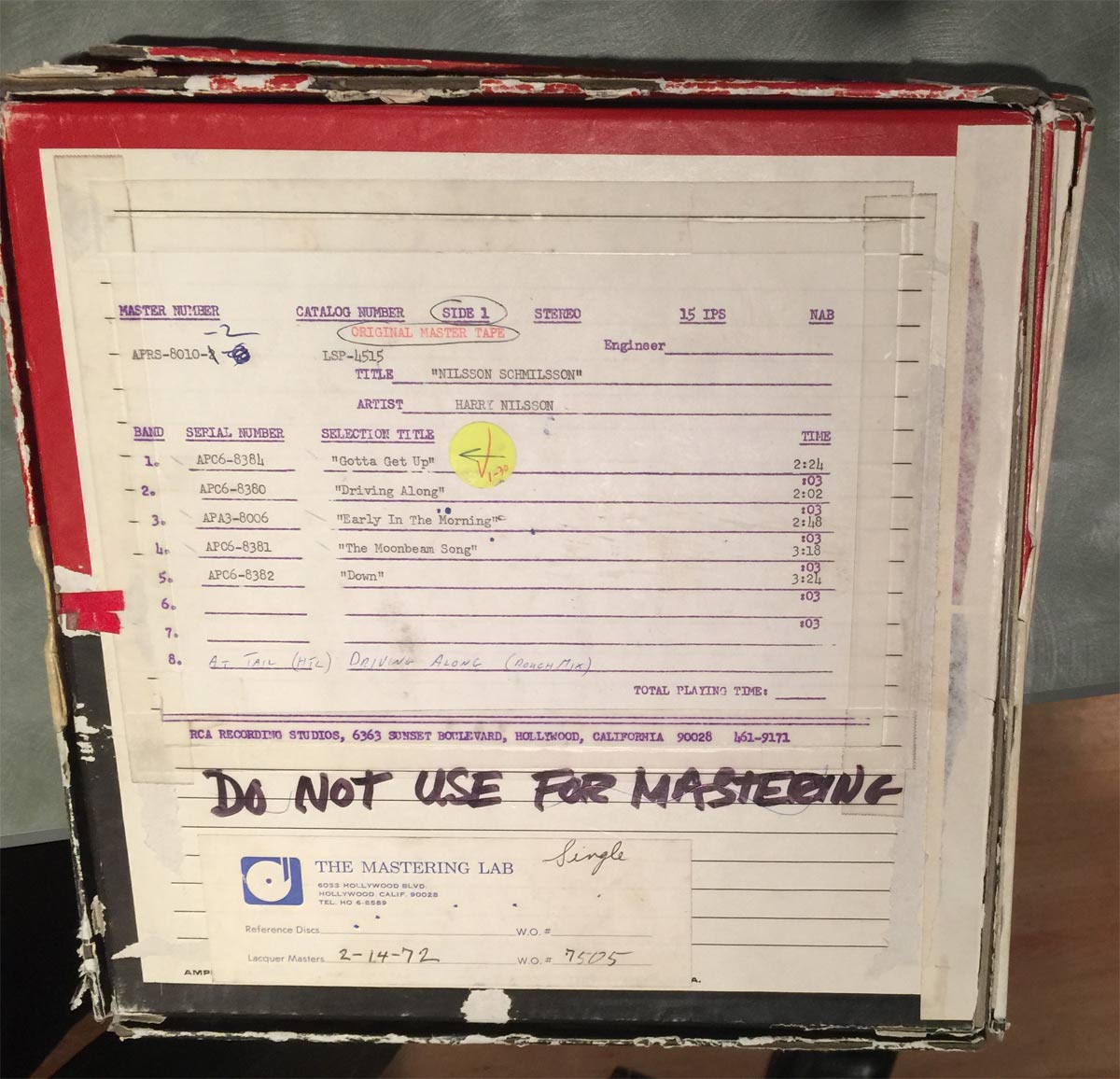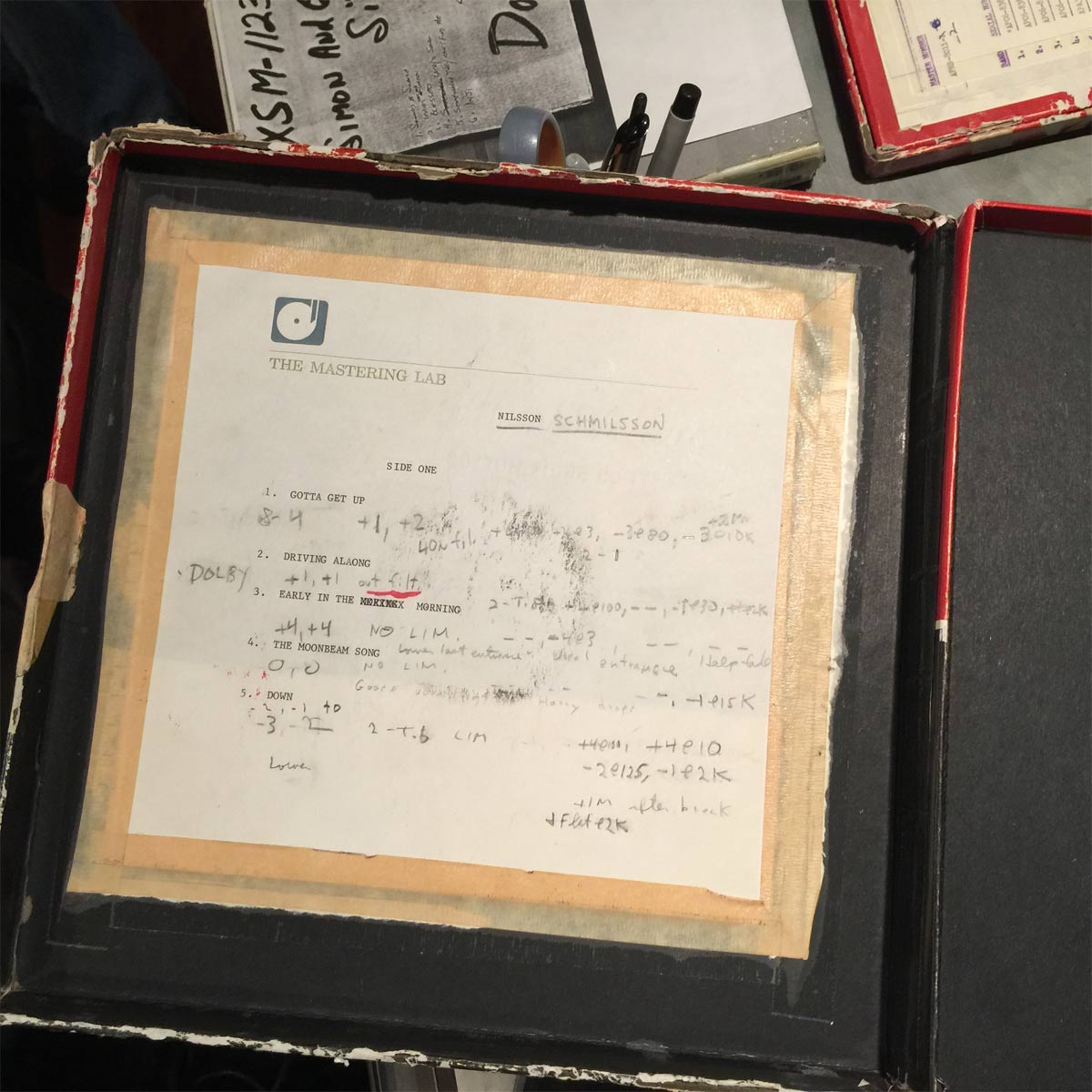A High-Resolution Audio Event: Part I
As part of the CE Week event last week, The Recording Academy® Producers and Engineers Wing celebrated the 25th anniversary of Sony’s Legacy Recordings by giving them a Certificate of Merit “acknowledging its excellence in producing and archiving digitally remastered titles, on a continuing basis, for more than 25 years”. The event was held at Battery Studios, a historic studio in midtown Manhattan. I was honored to be able to attend this rare event, which included listening sessions and audio demonstrations by the very talented engineers that bring us the very best versions of music from the Sony catalog…as high-resolution transfers from standard-res analog tapes.
Dave O’Donnell, the producer and engineer of the new James Taylor album “Before the World”, and I took the subway uptown following my last demo session in the basement of the Altman Building. Dave was kind enough to head into the city early enough to hear my presentation of real high-resolution audio in full 5.1 surround before we went to the Battery Studios event.
Dave used to have his studio in the building when it was the Record Plant. They’ve redone the place since Dave housed his business there…it’s got a lovely rooftop garden, illuminated artwork on the walls, and a very long list of both analog and digital playback machines. There’s a lot of history at this place. In fact, it was the last place that John Lennon used before his tragic death in 1980. Here’s a picture that I took of a photo pinned to the wall of Matt Cavaluzzo’s room.
Figure 1 – John Lennon and Yoko Ono in one of the studios at Battery Studios when it was the Record Plant.
The event began with some food and drink on the 11th floor. The weather was ideal and everyone enjoyed the roof top views of the city. Marc Finer of the DEG and Maureen Droney of the P&E Wing of NARAS gave the Certificate of Merit to John Jackson of Sony’s Legacy Recordings. It was very nice that the excellence of the work done at this facility was recognized.
Then it was time to divide the large group into manageable subgroups and visit the three studios for the demos. Vic Anesini, a veteran engineer with a long list of credits, manned the first room that my group visited. He introduced himself and his studio, showed us a few vintage photos, and held up the boxes containing the masters for Harry Nilsson’s 1971 classic “Nilsson Schmilsson” album. Here were the original master tapes. I had to get a couple of pictures…
Figure 2 – The box and label containing the “Original Master Tape” of “Nilsson Schmilsson”. [Click to enlarge]
Here’s another photo showing the equalization setting that the late Doug Sax applied during the original mastering of this project:
Figure 3 – The box containing side one of “Nilsson Schilsson” with the penciled notes indicating the EQ used during the mastering session. [Click to enlarge]
Vic played the original digital transfer (Battery Studios uses Pacific Microsonic Model 2 ADC/DACs) and then the high-res transfer remastered version. The cymbals and snare on the original sounded a bit harsh so he used Doug’s original notes to make some adjustments. It was interesting to me that his “sonic” ideal or goal is not an arbitrary “ideal” sound. He models his work on matching the sound of the original vinyl LP from 1971. Is this what audiophiles want? Could it be made to sound better than the original?
Vic also demonstrated “Sound of Silence” by Simon and Garfunkel. Both the Nilsson and Simon and Garfunkel tracks come from an era when I was a very active listener (of vinyl LPs). Hearing these tracks from the original transfer encoded at 96/24 PCM was a revelation…for a couple of reasons. First, the engineers and Sony choose to use 96 kHz/24-bit PCM (they sometimes use 192 as well)…and this is SONY’s operation. Why wouldn’t they archive these priceless masters using DSD? When asked that very question, John Jackson said they’ve considered it but the engineers are very pleased with PCM at 96/24.
The second thing that came to mind was the absence of any audiophile tweaks in the room. No special power conditioners, standard issue IEC power cords, star quad Mogami cables ($1.50 per foot), and B&W 801 Series III speakers. Here I was at the epicenter of audio restoration and the studios didn’t use anything esoteric or tweaky. If they’re the ones establishing the sound of these masters for all time and they’re happy with regular IEC power cords, why do exotic cable companies and audio accessory manufacturers make such outrageous claims and charge premium prices for things that aren’t used in the production of new music releases? I’m just saying.
I’ll share my thoughts as my group moved to the Miles Davis and Dave Brubeck demo tomorrow.





Very exciting – great read.
Thanks, Mark!
Mark, thank you for sharing these experiences with us.
As musicphiles a term I use where the person is more interested in the music and has a decent to great audio system, what matters that it sounds good!
As you said previously other formats can sound good, but may not have the fidelity as PCM. But is it required?
So often we are amazed with how well the work on a red book was done to make it sound ‘realistic, good, and enjoyable’.
I have finally come to the conclusion that its not the formats that make the sound good.
It’s the work that has been placed into it (mastering, mixing, producing it) to bring you all of the content close as possible to what you hear in the studios. That’s what matters.
Thank you once again for sharing with us your travels and the dedication you have to write each day your blog.
Respectfully,
Nev
I’ve said the same thing for years…the major problem with the lack of fidelity in music comes from the production end of the signal path NOT the format used to produce it. Analog tape, vinyl LPs, CDs, and even DSD encodes can sound great when done with care. None of these can approach the clarity and accuracy of high-resolution PCM but the choices made by the engineers and producers make the most difference.
Ah yes. Just verifies what everyone with any audio smarts at all knew all along. Cables tend to be nothing more than snake oil.
You asked a good question as to whether an audiophile would like an album “improved.” The answer could be yes but because “better” especially when most of these reissues have an emotional as well as musical content to them, the answer, at least for me, is a solid “matching the original.” What I look for in a digital re- release is a digital package that contains the best available reproduction of the original because I want it to sound the same minus clicks, pops and and as little hiss as possible. When that is achieved I am thrilled. I’ve heard some re-releases that are great but many that, for whatever reason, don’t sound the same and tho results in a loss of emotional connection. One that stands out is Dire Straits Brothers in Arms where the drums in Money for Nothing” were so far back in the mix in the digital release that it sounded like a completely different session rerecording. I wasn’t too happy with that as the original was such an effective demonstration record back in the day; full of excitement and power completely missing from the CD. So here’s one vote for “the same.” By the way, thank you for your dedication and passion. It’s truly appreciated.
This topic is worth further exploration. Maybe matching the sound of the original vinyl LP is the right thing to do but I’m not convinced. I asked Mark Wilder, one of the mastering guys at the Battery Studios event, if he matches the frequency response due to the RIAA curve or European spec? Does he fold the bass frequencies like the vinyl LP even if the digital file doesn’t need it. He does.
I think we can do better. I used to do the same kind of work that these engineers do. I mastered and restored analog masters (Will the Circle Be Unbroken). I referenced the vinyl LP and original CD mastering during my process but I made my own decisions, which included switching the left and right channels because they were inadvertently reversed on the CD…no one ever mentioned it.
Are we talking about archiving or remastering/mixing for a commercial release?
If we are archiving, everything possible should be done to capture the exact sound on the original analog master tape.
After that anyone can do anything they want with that sound to prepare it for a commercial release that THEY think sounds good.
The master tapes are captured but then are remastered to match the sound of the original vinyl LPs…not the best approach I think.
I certainly agree – what a waste!
Is that ‘common practice’, or just done in some cases?
Why would they do that?
Back in the day the original sound was eq’d, bass mono’d, and other compromises made to meet the technical restrictions of the vinyl media not because the engineers of the day thought it sounded better. That’s just dumb.. Maybe they ought to add a tick, pop, surface noise machine too.
The only reasons I can think of is that audiophiles and artist’s fan want the “original” analog sound. I could see doing both.
So if Sony is not using their proprietary DSD for library archiving, then why is it used at all?
I was quite surprised that Sony doesn’t use DSD as a transfer medium for the “classic” analog recordings. And they usually stick with 96 kHz/24-bits…don’t they know that audiophiles, numerous publication, and certain manufacturers claim that DSD is the ultimate format? These guys have been doing this work for decades and they know the realities of audio production. DSD is NOT part of the professional world of audio engineering. Despite what so-called experts say, PCM is the best and only way to work with high-resolution audio.
This is great reading and very enlightening on how the process works. Something the consumer doesn’t get to know about. Keep it coming!!!
Best….Carlo.
Looking at the condition of those tape boxes scares the heck out of me. Is this a reflection of the care that is given our legacy of music. I know they’re old but until I sold off my LP collection a few years back I had tons of LP that were as old or older than those 1971 recordings and except for some discoloration from age they looked pretty close to new. I’ve heard stories of the master tapes being stored in temp and humidity controlled room and being handled with great care. Those boxes don’t reflect anything like that, they look like they were tossed around with no concern as to having any value, hope the tapes themselves were handled with greater care.
I’m very disappointed.
Better get this stuff archived while we still can.
The care of older master tapes was sometimes quite good but generally pretty bad. After the records were released, no one seemed to care about the masters. Many have been lost.
Seeing that Side 1 master tape of Nilsson Schmilsson is a real treat! You wouldn’t happen to have pictures of the Side 2 reel or tape box would you? Great stuff!
As much as I try, I cannot decipher identical masterings between 24/44.1khz up to 24/192Khz. What does stand out, is what various D/A converters sound like at *different sample rates* regardless of the original file’s sample rate. The Nilsson Schmilsson 96/24 that’s retailing as a download seems like it’s from the original transfer used for the CD remaster that Vic Anesini did many years ago, unless the digital limiting on the drum solo of “Jump Into The Fire” was repeated, as it’s still here on the 96/24 version…I cannot imagine why, though.